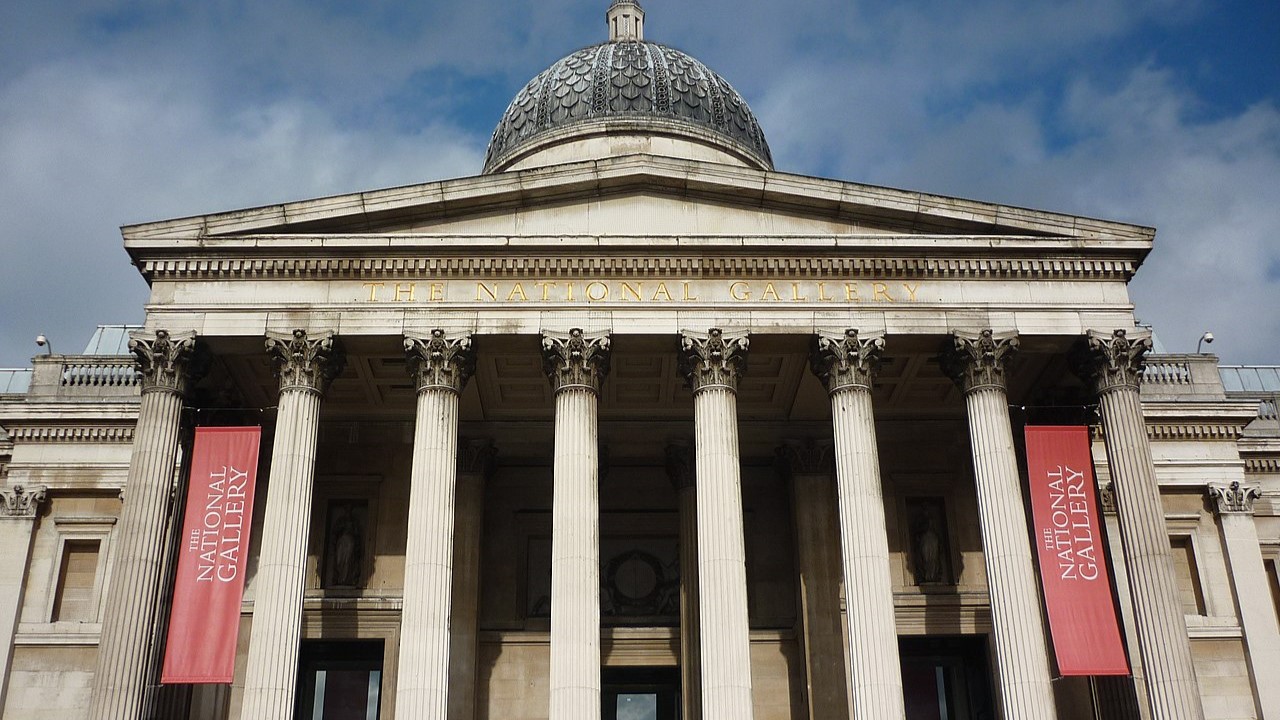What do medieval farming, the art market, Chinese immigration, the rise of the biotech industry, Japanese manufacturing (with a diversion into haute couture footwear) and medieval risk management have in common? They are all topics being explored by second year PhD students in the Department of Economic History, LSE – this article offers a look at their research in progress.
Luisa Bicalho-Ritzkat: Institutional Investors in the art market – The National Gallery 1824-1994
The National Gallery, London is celebrating its bicentennial this year. Renowned for displaying some of the world’s most impressive artworks, its collection had to be carefully acquired. Since it did not have a royal endowment, the museum relied on purchases and donations to build its collection. My research examines the museum’s acquisition strategy from its inception in 1824 until 1914, and how its acquisitions performed financially throughout the twentieth century. For this, I have created a new dataset of more than 3,000 artworks using their insurance valuations.
My findings show that the collection purchased by the National Gallery had a substantial rate of return, exceeding previous estimates on art. As visible in the figure below, the museum performed particularly well in the latter half of the twentieth century. Using methods from modern portfolio management, I show that overperformance holds even when risk adjusting, with an average Information Ratio (IR) of 24% annually. The IR measures the risk-adjusted return of an investment, calculated by dividing the excess return by the tracking error. The results are not driven by the acquisitions made under a specific art director or for a specific group of artworks. This indicates that the relevant expertise is institutionalized.

Viren Mahurkar: Financial Cycles and the Late Twentieth Century Rise of the U.S. Biotech Industry
In March 1981, pioneering scientist Herb Boyer appeared on the cover of Time magazine, drawing public attention to his ground-breaking work with living organisms. Boyer’s innovations promised medical breakthroughs and new avenues for U.S. technological dominance. Unusually for the time, he co-founded a biotech company, launching a new industry. Decades later this industry would develop mRNA vaccines that played a crucial role in combating the COVID-19 pandemic.
My research explores how scientists transitioned from lab experiments to forming a major industry. It focuses on how they secured funding for their high-risk, long-term projects. Using U.S. macro financial data, Patent Office records, oral histories, digital archives, and contemporary newspapers, I examine how biotech companies struggled to finance their ideas.
Traditional financial systems could not meet the biotech industry’s substantial capital needs due to the long timelines for research and development. Instead, biotech firms leveraged their intellectual property, such as patents, to raise funds. This approach, however, made them vulnerable to financial cycles. Ultimately, biotech companies sought capital from any available source, including personal resources, wealthy individuals, and profits from unrelated industries like oil and metals.
My work offers insights into the dynamics of financial cycles and innovation, paralleling historical periods of significant technological advancement and illustrating Schumpeterian dynamics, which describe the critical role of financing innovation in supporting technological breakthroughs, for the twentieth century.
Thomas Learmouth: From Tabi to Tyres – The Absorption of Foreign Manufacturing Knowledge in Japan 1900-1965
My research explores Japan as the pioneer of catch-up industrialisation outside the West, focusing on the absorption of foreign manufacturing knowledge in the rubber industry.
In 1908, the British trading company H. & W. Greer established a factory in Kobe for London rubber manufacturer J. G. Ingram, followed by a factory for Dunlop in 1909. Post-WWI, Ingram’s Japanese spin-off firms, initially producing rickshaw tyres, became the pivot of a new vulcanised rubber footwear cluster. In the 1930s, cheap Kobe-manufactured shoes swept global export markets before being hit with dumping duties, especially across the British Empire. After WWII, Kobe’s rubber footwear cluster evolved into a synthetic footwear cluster, giving rise to sports shoe brands Asics and Nike.

Submitted in April 1919, registered in May 1920. J-PlatPat. Patent No. 52481 https://www.j-platpat.inpit.go.jp/
Maison Margiela, the avant-garde French fashion house, and Bridgestone, the world’s largest tyre-maker, share roots in tabi, traditional Japanese split-toed footwear. In the city of Kurume two tabi sellers transitioned to large-scale factory production in the 1910s. By the 1920s, Kurume-based firms Tsuchiya Tabi and Nippon Tabi drew on knowledge from Dunlop’s Kobe factory to begin making rubber-soled tabi (jika tabi). These firms then rapidly expanded into export markets with rubber-soled canvas shoes. In 1931, Ishibashi Shōjirō spun off Nippon Tabi’s new motor tyre division as Bridgestone, which promptly forced its way into an oligopoly with Dunlop and Goodrich (Yokohama Rubber) in Japan’s motor tyre market. Bridgestone consolidated its position in the 1950s through a technical tie-up with Goodyear. Decades later, Martin Margiela’s iconic tabi boots, inspired by Kurume jika tabi, debuted in Maison Margiela’s seminal 1989 fashion show.

Kurume firms in black. Compiled from Sawai, Minoru, & Masaki Nakabayashi, ‘Seisan Soshiki to Seisan Kanri no Shosō’ [Aspects of Production Organisation and Production Management] in Satoshi Sasaki and Masaki Nakabayashi eds., Kōza Nihon Keieishi 3: Soshiki to Senryaku no Jidai: 1914-1937 [Business History of Japan 3 the Era of Strategy and Organisation, 1914-1937] (Kyoto: Minerva Shōbō, 2010), pp. 72-73.
Tianning Zhu: Kinship Networks and Chinese Emigration in the Nineteenth and Early Twentieth Century
My mother’s side of the family has been quite mobile. There have been a lot of emigrants from her clan over many generations. Many of them moved out of their village in Guangdong, one of the major migrant-sending areas in China, and settled in Malaysia. This family history inspired my research project on the chain migration of people born between the nineteenth and early twentieth centuries in Guangdong. I use Chinese genealogical data to uncover kinship ties among migrants and explore how past migration might be related to future migration. The graph below shows a male-only family tree with many migrants. I constructed a connectedness score measuring how close a male was to all the earlier male migrants in his paternal kinship network based on his position on the family tree.

In my pilot project using my mother’s genealogy, I found that people were more likely to move if they had a stronger connection with migrants, and migrants were more likely to move to the geographical areas where they had a stronger local migrant network. However, there is heterogeneity within the family tree and migration destinations.
One of my next steps is to understand why chain migration does not always work. By placing the migrants in their extended families, this project may be able to show how migrant selection and destination choices are explained by factors beyond economic or political components.
Noah Sutter: A Testament to Revolution? Studies in Social Mobility and Elite Change in France, 1790-1870
The long nineteenth century was a transformative period in France, characterised by the revolutions of 1789, 1830, and 1848, as well as widespread industrialisation throughout the century. These events significantly impacted the social mobility and status of the old regime elites, a topic not extensively studied yet. Unlike England, where elite status and wealth have shown long-term persistence through the practice of ‘gentlemanly capitalism’ – a system where the elites invested in banking, commerce, and industry while maintaining traditional social norms – France’s repeated revolutions and lack of such a system suggest a potential for greater downward mobility among old regime elites. However, recent scholarship indicates a more complex reality, where the nobility maintained significant economic and social influence due to land-based wealth that remained largely unaffected by political upheavals.
To explore these dynamics, Aurelius Noble and I are digitizing the ‘Tables des Successions et Absences’ (TSA), a unique source documenting wealth and social mobility from the revolutionary era. This data, born from revolutionary fiscal reforms aimed at equality, provides detailed records of wealth distribution at death. Our project uses advanced technology to segment and recognise handwritten texts, creating a new dataset to analyse multi-generational social mobility in France.
The graph below shows the overrepresentation of political elites over several generations, illustrating the persistence of nobility despite revolutionary changes. The data reveals that although there was a decline in representation, old regime elites still maintained a significant presence in politics.

Our work contributes to understanding social mobility by addressing the limitations of traditional bi-generational measures (parents and children), which often underestimate persistence. By linking family generations and using rare surnames, we aim to provide a more accurate picture of social mobility across multiple generations.
Together, with further projects examining elite persistence across generations and inheritance customs, my PhD provides a deeper understanding of how revolutions and legal changes influenced social mobility and elite continuity in France from 1790 to 1870.
Gregory Salter: Risk Management in the Fourteenth Century
Medieval peasants were far from cautious or risk-averse. Both peasants and landlords made decisions to manage the various risks involved in farming during the late Middle Ages. To manage risk, they used two main strategies: diversification and risk transfer.
Diversification meant growing different crops sown at different times of the year. Normally, the yields of the three main medieval crops—wheat, barley, and oats—were not closely correlated, so growing all three helped reduce the risk of famine. But during periods of extreme weather, for example the Great Famine of 1315-17, all the crops failed, making diversification ineffective. Thus, strategies of risk transfer were particularly necessary. An example of risk transfer involved leasing land, which transferred the farming risks from the landlord to the lessee but left the landlord with some credit risk.
I use the records of the Bishop of Winchester to study the risk management of medieval farmers and landlords. By the fourteenth century, the Bishop of Winchester’s estate included about sixty manors across southern England. The estate aimed to generate cash income, and detailed records of these manors have survived from the thirteenth to sixteenth centuries; these records provide the data for my study.
One key focus is how the bishop set lease prices. After the Black Death, when labour was scarce, and wages were rising, leasing seemed attractive because it transferred agricultural risks to lessees while providing the bishop with a fixed payment. The question is, how did that payment relate to the value that bishop had previously received? Pricing could provide evidence of the incentive for farmers to take on risk and their confidence to manage the land productively.
The graph below shows one example from the manor of Wycombe that was leased in 1408 for £73.33 per year. The lease income is compared to the equivalent cash income from the same manor in the preceding years, the lease payment of £73.33 per year appears to be higher than the expected income from its previous performance.
Over time, these leasing decisions transferred farming risks from landholders, such as the Bishop of Winchester, to a growing class of skilled farmers who were better at managing them. I plan to analyse the remaining manors to see if this pattern of pricing was consistent and how lease terms varied over time and by location.





